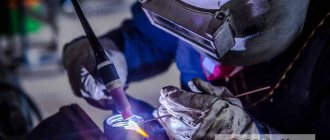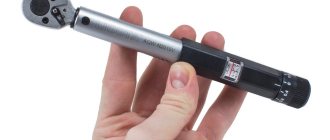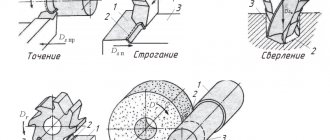The principle of semiconductor control of electric current was known at the beginning of the twentieth century. Even though electronics engineers knew how a transistor worked, they continued to design devices based on vacuum tubes. The reason for such distrust of semiconductor triodes was the imperfection of the first point-point transistors. The family of germanium transistors did not have stable characteristics and were highly dependent on temperature conditions.
Monolithic silicon transistors began to seriously compete with vacuum tubes only in the late 50s. Since that time, the electronics industry began to develop rapidly, and compact semiconductor triodes actively replaced energy-intensive lamps from electronic device circuits. With the advent of integrated circuits, where the number of transistors can reach billions, semiconductor electronics has won a landslide victory in the fight to miniaturize devices.
What is a transistor?
In its modern meaning, a transistor is a semiconductor radio element designed to change the parameters of an electric current and control it. A conventional semiconductor triode has three terminals: a base, which receives control signals, an emitter, and a collector. There are also high power composite transistors.
The size scale of semiconductor devices is striking - from several nanometers (unpackaged elements used in microcircuits) to centimeters in diameter for high-power transistors intended for power plants and industrial equipment. Reverse voltages of industrial triodes can reach up to 1000 V.
Device
Structurally, the triode consists of semiconductor layers enclosed in a housing. Semiconductors are materials based on silicon, germanium, gallium arsenide and other chemical elements. Today, research is being conducted to prepare certain types of polymers, and even carbon nanotubes, for the role of semiconductor materials. Apparently in the near future we will learn about new properties of graphene field-effect transistors.
Previously, semiconductor crystals were located in metal cases in the form of caps with three legs. This design was typical for point-point transistors.
Today, the designs of most flat, including silicon semiconductor devices are made on the basis of a single crystal doped in certain parts. They are pressed into plastic, metal-glass or metal-ceramic cases. Some of them have protruding metal plates for heat dissipation, which are attached to the radiators.
The electrodes of modern transistors are arranged in one row. This arrangement of the legs is convenient for automatic board assembly. The terminals are not marked on the housings. The type of electrode is determined from reference books or by measurements.
For transistors, semiconductor crystals with different structures, such as pnp or npn, are used. They differ in the polarity of the voltage on the electrodes.
Schematically, the structure of a transistor can be represented as two semiconductor diodes separated by an additional layer. (See Figure 1). It is the presence of this layer that allows you to control the conductivity of the semiconductor triode.
Rice. 1. Structure of transistors
Figure 1 schematically shows the structure of bipolar triodes. There is also a class of field-effect transistors, which will be discussed below.
Basic operating principle
At rest, no current flows between the collector and emitter of a bipolar triode. Electric current is prevented by the resistance of the emitter junction, which arises as a result of the interaction of the layers. To turn on the transistor, you need to apply a small voltage to its base.
Figure 2 shows a diagram explaining the working principle of a triode.
Rice. 2. Operating principle
By controlling the base currents, you can turn the device on and off. If an analog signal is applied to the base, it will change the amplitude of the output currents. In this case, the output signal will exactly repeat the oscillation frequency at the base electrode. In other words, the electrical signal received at the input will be amplified.
Thus, semiconductor triodes can operate in electronic switch mode or in input signal amplification mode.
The operation of the device in electronic key mode can be understood from Figure 3.
Rice. 3. Triode in switch mode
Designation on diagrams
The generally accepted designation is “VT” or “Q” , followed by a positional index. For example, VT 3. On earlier diagrams you can find outdated designations: “T”, “PP” or “PT”. The transistor is depicted as symbolic lines indicating the corresponding electrodes, circled or not. The direction of current in the emitter is indicated by an arrow.
Figure 4 shows a ULF circuit in which transistors are designated in a new way, and Figure 5 shows schematic images of different types of field-effect transistors.
Rice. 4. Example of a ULF circuit using triodes
Color and digital marking
Transistors, like other radio components, are marked using a color code. The color code consists of images of geometric shapes (triangles, squares, rectangles, etc.), colored dots and Latin letters.
The code is applied to the flat parts, cover and other places of the transistor. From it you can find out the type of transistor, month and year of manufacture. Marking locations and color codes for some types of transistors are shown in Fig. 2…3 and in table. 1…4. It is also practiced to mark some types of transistors with a digital code (Table 4).
Table 1. Color and code markings of low-power mid-frequency and high-frequency transistors.
| Transistor type | Transistor groups | Release month | Year of issue | ||||
| Designation | Marking | Designation | Marking | Designation | Marking | Designation | Marking |
| yang v. | beige | ||||||
| A | pink | Feb. | blue | 1977 | beige | ||
| B | yellow | March | green | 1978 | ealate | ||
| IN | blue | Apr. | red | 1979 | orange | ||
| G | beige | May | ealate | 1980 | electrician | ||
| D | orange | June | gray | 1981 | turquoise | ||
| KT3107 | blue | E | electrician | July | brown | 1982 | white |
| AND | ealate | Aug. | orange | 1983 | red | ||
| AND | green | Sep. | electrician | 1984 | brown | ||
| TO | red | Oct. | white | 1985 | green | ||
| L | gray | November | yellow | 1986 | blue | ||
| December | blue | ||||||
Table 2. Color marking of transistor KT3107.
Rice. 2. Places for color and code marking of low-power mid-frequency and high-frequency transistors in the KT-26 (TO-92) housing.
Rice. 3. Places of color marking of the KT3107 transistor in the KT-26 (TO-92) housing.
Rice. 4. Places of code marking of transistors in the KT-27 (TO-126) housing.
Table 3. Color and code markings of transistors.
| Code | Type |
| 4 | KT814 |
| 5 | KT815 |
| 6 | KT816 |
| 7 | KT817 |
| 8 | KT683 |
| 9 | KT9115 |
| 12 | K.U112 |
| 40 | KT940 |
| Year of issue | Code | Release month | Code |
| 1986 | And | January | 1 |
| 1987 | V | February | 2 |
| 1988 | W | March | 3 |
| 1989 | X | April | 4 |
| 1990 | A | May | 5 |
| 1991 | IN | June | 6 |
| 1992 | WITH | July | 7 |
| 1993 | D | August | 8 |
| 1994 | E | September | 9 |
| 1995 | F | October | 0 |
| 1996 | N | November | N |
| 1997 | 1 | December | D |
| 1998 | TO | — | — |
| 1999 | L | — | — |
| 2000 | M | — | — |
Table 4. Code marking of power transistors.
Types of transistors
Based on their operating principle and structure, semiconductor triodes are distinguished:
- field;
- bipolar;
- combined.
These transistors perform the same functions, but there are differences in the principle of their operation.
Field
This type of triode is also called unipolar, due to its electrical properties - they carry current of only one polarity. Based on their structure and type of control, these devices are divided into 3 types:
- Transistors with control pn junction (Fig. 6).
- With an insulated gate (available with a built-in or induced channel).
- MIS, with structure: metal-dielectric-conductor.
A distinctive feature of an insulated gate is the presence of a dielectric between it and the channel.
Parts are very sensitive to static electricity.
Circuits of field triodes are shown in Figure 5.
Rice. 5. Field effect transistors
Rice. 6. Photo of a real field-effect triode
Pay attention to the names of the electrodes: drain, source and gate.
Field effect transistors consume very little power. They can work for more than a year on a small battery or rechargeable battery. Therefore, they are widely used in modern electronic devices such as remote controls, mobile gadgets, etc.
Bipolar
Much has been said about this type of transistor in the subsection “Basic operating principle.” Let us only note that the device received the name “Bipolar” because of its ability to pass charges of opposite signs through one channel. Their feature is low output impedance.
Transistors amplify signals and act as switching devices. A fairly powerful load can be connected to the collector circuit. Due to the high collector current, the load resistance can be reduced.
Let's look at the structure and principle of operation in more detail below.
Combined
In order to achieve certain electrical parameters from the use of one discrete element, transistor developers invent combined designs. Among them are:
- bipolar transistors with embedded resistors and their circuit;
- combinations of two triodes (same or different structures) in one package;
- lambda diodes - a combination of two field-effect triodes forming a section with negative resistance;
- designs in which a field-effect triode with an insulated gate controls a bipolar triode (used to control electric motors).
Combined transistors are, in fact, an elementary microcircuit in one package.
Literature on electronics
The science that studies transistors and other devices is called electronics. Its entire section is devoted to semiconductor devices. If you are interested in getting more information about the operation of transistors, you can read the following books on this topic:
- Digital Circuit Design and Computer Architecture - David M.
- OS. Design and implementation - Andrew T.
- Power electronics for amateurs and professionals - B. Yu. Semenov.
These books describe various programmable electronics tools. Of course, all programmable circuits are based on transistors. Thanks to these books, you will not only gain new knowledge about transistors, but also skills that may bring you income.
Now you know how transistors work and where they are used in life. If you are interested in this topic, continue to study it, because progress does not stand still, and all technical devices are constantly being improved. In this matter, it is very important to keep up with the times. I wish you success!
How does a bipolar transistor work? Instructions for dummies
The operation of bipolar transistors is based on the properties of semiconductors and their combinations. To understand the principle of operation of triodes, let's understand the behavior of semiconductors in electrical circuits.
Semiconductors.
Some crystals, such as silicon, germanium, etc., are dielectrics. But they have one feature - if you add certain impurities, they become conductors with special properties.
Some additives (donors) lead to the appearance of free electrons, while others (acceptors) create “holes”.
If, for example, silicon is doped with phosphorus (donor), we obtain a semiconductor with an excess of electrons (n-Si structure). By adding boron (an acceptor), the doped silicon will become a hole-conducting semiconductor (p-Si), that is, its structure will be dominated by positively charged ions.
One-way conduction.
Let's conduct a thought experiment: connect two different types of semiconductors to a power source and supply current to our design. Something unexpected will happen. If you connect the negative wire to an n-type crystal, the circuit will be completed. However, when we reverse the polarity, there will be no electricity in the circuit. Why is this happening?
As a result of connecting crystals with different types of conductivity, a region with a pn junction is formed between them. Some electrons (charge carriers) from an n-type crystal will flow into a crystal with hole conductivity and recombine holes in the contact zone.
As a result, uncompensated charges arise: in the n-type region - from negative ions, and in the p-type region from positive ions. The potential difference reaches values from 0.3 to 0.6 V.
The relationship between voltage and impurity concentration can be expressed by the formula:
φ= VT * ln (Nn * Np)/n2i, where
VT is the value of the thermodynamic stress, Nn and Np are the concentration of electrons and holes, respectively, and ni denotes the intrinsic concentration.
When connecting a plus to a p-conductor and a minus to an n-type semiconductor, the electric charges will overcome the barrier, since their movement will be directed against the electric field inside the pn junction. In this case, the transition is open. But if the poles are reversed, the transition will be closed. Hence the conclusion: the pn junction forms one-way conductivity. This property is used in the design of diodes.
From diode to transistor.
Let's complicate the experiment. Let's add another layer between two semiconductors with the same structures. For example, between p-type silicon wafers we insert a conductivity layer (n-Si). It is not difficult to guess what will happen in the contact zones. By analogy with the process described above, regions with pn junctions are formed, which will block the movement of electrical charges between the emitter and collector, regardless of the polarity of the current.
The most interesting thing will happen when we apply a slight voltage to the layer (base). In our case, we will apply a current with a negative sign. As in the case of a diode, an emitter-base circuit is formed through which current will flow. At the same time, the layer will begin to become saturated with holes, which will lead to hole conduction between the emitter and collector.
Look at Figure 7. It shows that positive ions have filled the entire space of our conditional structure and now nothing interferes with the conduction of current. We have obtained a visual model of a bipolar transistor with a pnp structure.
Rice. 7. Principle of operation of the triode
When the base is de-energized, the transistor very quickly returns to its original state and the collector junction closes.
The device can also operate in amplification mode.
The collector current is directly proportional to the base current: Iк = ß*IB , where ß is the current gain, IB is the base current.
If you change the value of the control current, the intensity of hole formation on the base will change, which will entail a proportional change in the amplitude of the output voltage, while maintaining the signal frequency. This principle is used to amplify signals.
By applying weak pulses to the base, at the output we get the same amplification frequency, but with a much larger amplitude (set by the voltage applied to the collector-emitter circuit).
NPN transistors work in a similar way. Only the polarity of the voltages changes. Devices with NPN structure have direct conductivity. PNP type transistors have reverse conductivity.
It remains to add that the semiconductor crystal reacts in a similar way to the ultraviolet spectrum of light. By turning the photon flow on and off, or adjusting its intensity, you can control the operation of a triode or change the resistance of a semiconductor resistor.
Bipolar transistor connection circuits
Circuit designers use the following connection schemes: with a common base, common emitter electrodes, and connection with a common collector (Fig. 8).
Rice. 8. Connection diagrams for bipolar transistors
Amplifiers with a common base are characterized by:
- low input impedance, which does not exceed 100 Ohms;
- good temperature properties and frequency characteristics of the triode;
- high permissible voltage;
- two different power sources are required.
Common emitter circuits have:
- high current and voltage gain;
- low power gain;
- inversion of the output voltage relative to the input.
With this connection, one power source is sufficient.
The connection diagram based on the “common collector” principle provides:
- high input and low output resistance;
- low voltage gain factor (< 1).
Operating principle of the device
A transistor is a semiconductor device designed to amplify an electrical signal. Thanks to the special structure of crystal lattices and semiconductor properties, this device is able to increase the amplitude of the flowing current .
Semiconductors are substances that are capable of conducting current and also preventing its passage. Their most prominent representatives are silicon and germanium. There are two types of semiconductors:
- Electronic.
- Hole.
In semiconductors, electric current occurs due to a lack or excess of free electrons. For example, the crystal lattice of an atom consists of three electrons. However, if you introduce an atom consisting of four electrons into this substance, one will be extra. It is a free electron. Accordingly, the more such electrons, the closer this substance is to a metal in its properties. This means that the current conductivity is greater. Such semiconductors are called electronic .
Now let's talk about hole ones. To create them, atoms of another substance are introduced into a substance, the crystal lattice of which contains more atoms. Accordingly, there are fewer electrons in our semiconductor. Vacant places for electrons are formed. Valence bonds will be destroyed as electrons strive to occupy these vacant positions. Further, we will call them holes.
Electrons constantly strive to occupy a hole and, starting to move, form a new hole. Absolutely all electrons exhibit this behavior. They move in the semiconductor, which means current begins to flow . Such semiconductors are called hole semiconductors.
Thus, by introducing a deficiency or excess of electrons into silicon or germanium, we promote their movement. This produces a current. Transistors consist of connections of these semiconductors according to a certain principle. With their help, you can control flowing currents and other parameters of electrical signals.
How does a field effect transistor work? Explanation for dummies
The structure of a field-effect transistor differs from a bipolar one in that the current in it does not cross the pn junction zone. The charges move through a controlled area called the gate. The gate throughput is controlled by voltage.
The space of the pn zone decreases or increases under the influence of the electric field (see Fig. 9). The number of free charge carriers changes accordingly - from complete destruction to extreme saturation. As a result of this effect on the gate, the current at the drain electrodes (contacts that output the processed current) is regulated. The incoming current flows through the source contacts.
Figure 9. Field-effect transistor with pn junction
Field triodes with a built-in and induced channel operate on a similar principle. You saw their diagrams in Figure 5.
Field-effect transistor connection circuits
In practice, connection diagrams are used by analogy with a bipolar triode:
- with a common source - produces a large gain in current and power;
- common gate circuits provide low input impedance and low gain (has limited use);
- common-drain circuits that operate in the same way as common-emitter circuits.
Figure 10 shows various connection schemes.
Rice. 10. Image of field triode connection diagrams
Almost every circuit is capable of operating at very low input voltages.
Main characteristics
The main feature of all types of transistors is the ability to control a powerful current using a small current. Their ratio shows how efficient the semiconductor device is.
In bipolar transistors, this indicator is called the static base current transfer coefficient. It characterizes how many times the main collector current is greater than the base current that caused it. This parameter has a very wide value and can reach 800.
Although at first glance it seems that the principle “the more the merrier” is important here, in reality this is not the case. Rather, the saying “less is more” applies here. On average, bipolar transistors have a base current transfer coefficient ranging from 10 to 50.
For field-effect transistors, a parameter of a similar type is called the slope of the input characteristic or the conductivity of direct current transmission. In short, it shows how much the voltage passing through a channel will change if the gate voltage is changed by 1 V.
If a signal with a certain frequency is applied to a transistor, it will amplify it many times over. This property of semiconductor devices is used in radio electronics. However, there is a frequency amplification limit beyond which the triode is no longer able to amplify the signal.
Therefore, the maximum operating frequency of the signal is considered optimal, 10-20 times lower than the maximum frequency gain of the transistor.
Another significant characteristic of a transistor is the maximum permissible power dissipation. The fact is that when any electrical device operates, heat is generated. The higher the current and voltage in the circuit, the greater it is.
It is removed in several ways: using special radiators, forced air flow, and others. Thus, there is a certain limit on the amount of heat for any triode (it is different for each) that it can dissipate into space. Therefore, when choosing a device, they proceed from the characteristics of the electrical circuit on which the transistor is to be installed.











